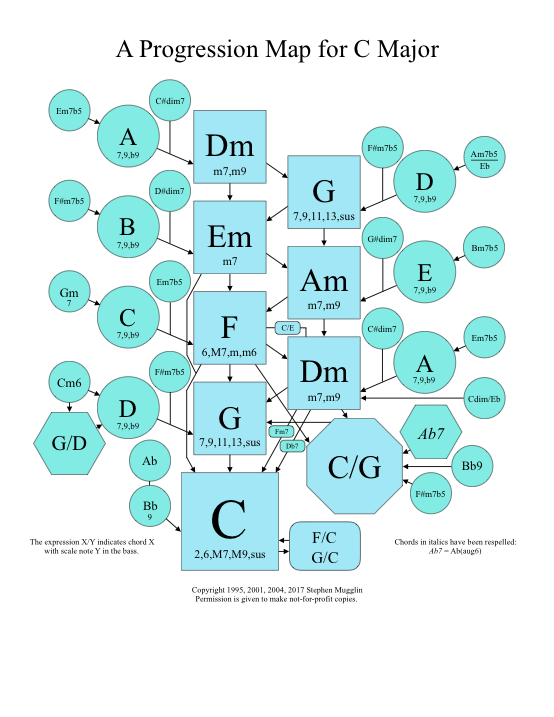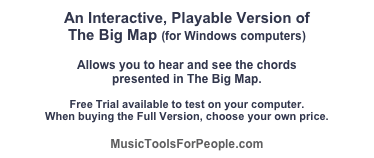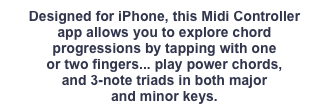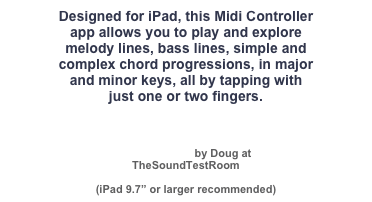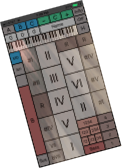Part Five
Secondary Chords and the Big Map
Concept #9 - Chords from Other Keys
When we left Part Four, we were just about to discuss Secondary Chords. These are chords borrowed from other keys. Let's explain it this way.
Have you ever visited a Water Park with pools and slides? Let's take our Simple Map and use our imagination. First, we’re going to change the simple map from I, ii, iii, IV, V, vi to C, Dm, Em, F, G, and Am. These are the chords for the key of C. Second, we’re going to illustrate each square in the diagram as a "pool" in an imaginary Water Park.
The diagram with the “pools” is pictured on the right.
Do you remember the rules? You may jump anywhere from I, which in this case is C. If a chord appears at more than one place (like Dm or G), there is a "secret tunnel" connecting them, so being at one spot is the same as being at the other.
But this time we add a new rule. At any time you may leave the “water” to come down a “slide.” Where are the slides?
The slides are the green locations pictured in the next diagram, the one labeled “A Progression Map For C Major.”
Some Things to Think About
The first idea is not to be afraid of the complexity of the picture. Yes, it may look complicated, but we are only in one box or circle at a time, and the general flow of the arrows is back toward the home location, which is the C at the bottom. From there we can jump anywhere we like, and then come flowing back.
Also, the sounds represented by these locations are sounds you’ve probably heard before, perhaps many times, and have grown accustomed to, though you may not have seen them spread out in a picture.
We call this diagram “The Big Map.” The example here is for the key of C major. There are other charts like this, for the other major keys, in the “Charts and Maps” section of this site. There is also a “Generic Map,” with roman numerals instead of specific names for the chords, for those who would like to have this information on just one page.
Some Things to Notice
While we’re looking at The Big Map for C, there are a few things to notice.
-
1.First, let's talk about the blue boxes. Some of the chord variations now appear at the bottom of each box. For instance, C lists the 2 chord, the 6 chord, major 7, major 9, and suspended as possible options, any of which can be played at that location.
-
-
2.Three blue locations have been added.
-
-
The octagon with C/G inside indicates that this chord quite often follows Dm or F, and then heads for G before going home to C.
-
-
The box labeled F/C and G/C shows that the right hand chord can change while the bass note (C) stays right where it is. This technique, holding a bass note while varying the chord above it, yields many surprising and useful sounds.
-
-
Finally, the little box labeled C/E is often found between F and Dm. It works going either way.
-
-
3.The chords with a green background don't belong to the key of C; they come from other keys. They are useful when we want to explore sounds a little "farther from home."
-
-
You can put a green chord almost anywhere, but when you do, you'll probably want to follow the arrows back toward the blue ones. Your audience will feel good when the chords that seem far from home step back to more familiar ground.
Review of Part Five
In this section we imagined our Simple Map as being a group of pools, each one with slides flowing into it. These slides allow you to choose a chord outside the key and come back smoothly to more familiar sounds. We also added a few new locations to the simple part of the map.
With all of these chord possibilities, there is quite a lot of room to explore and practice. If you spend some time learning, your music will show the difference.
This way to Charts and Maps and then on to Part Six.







